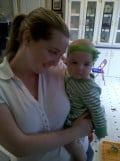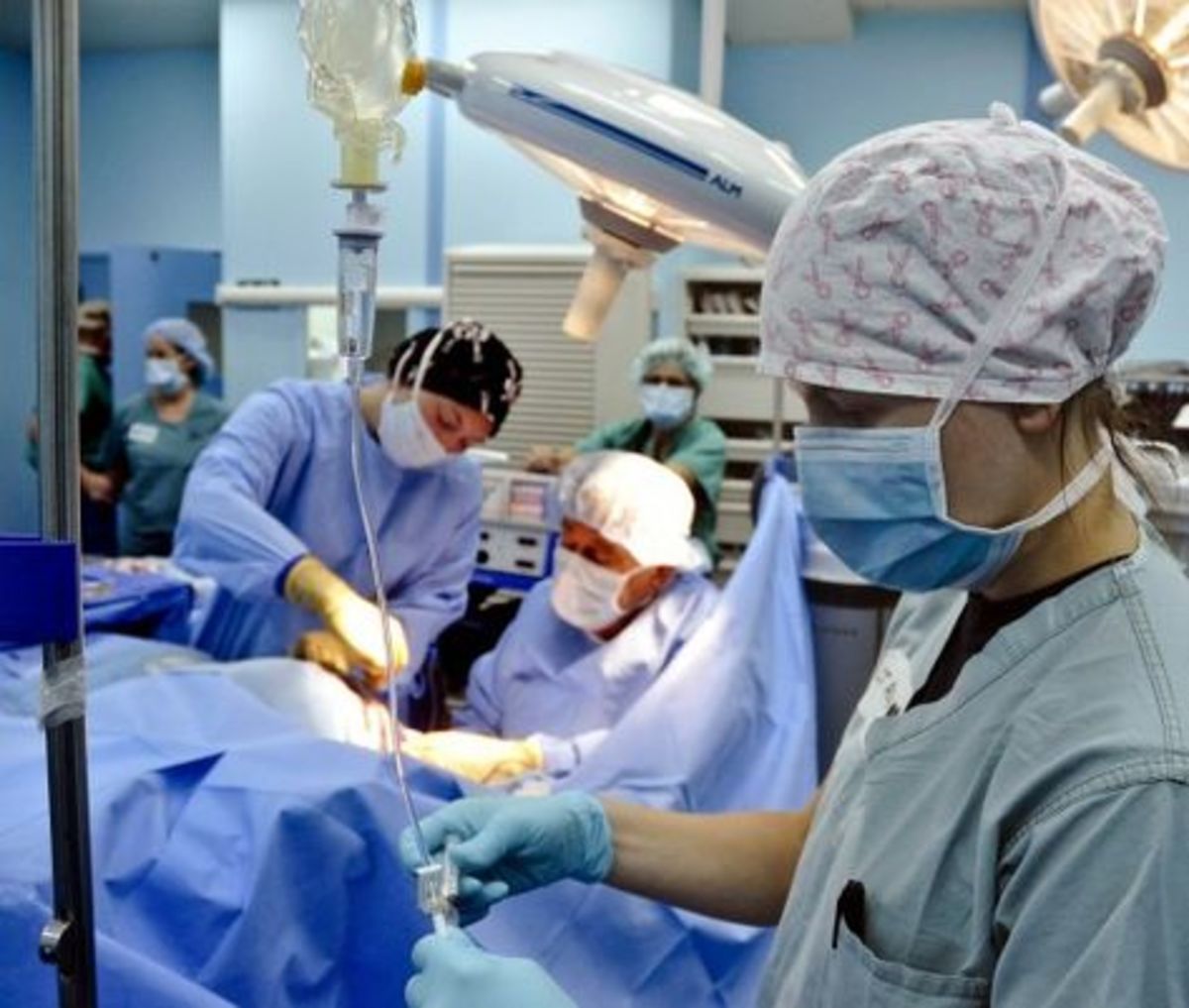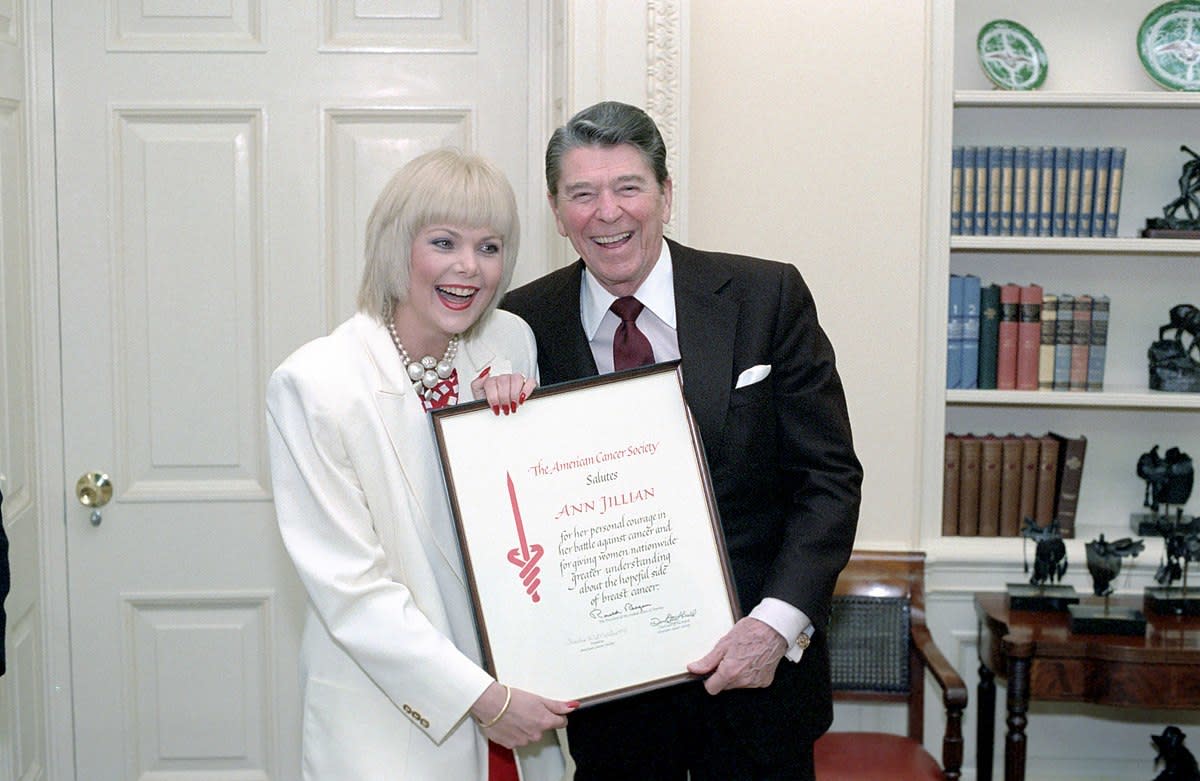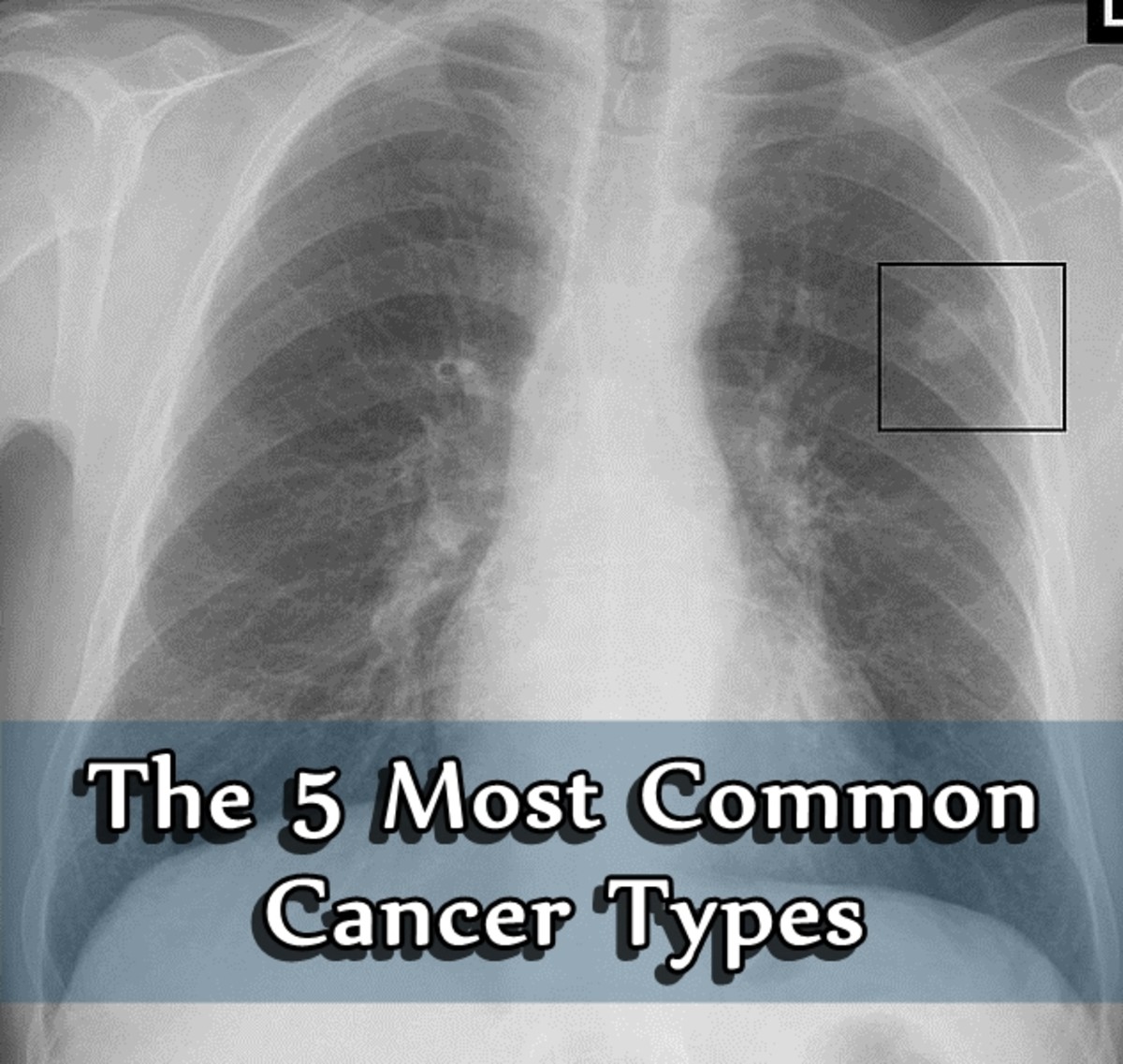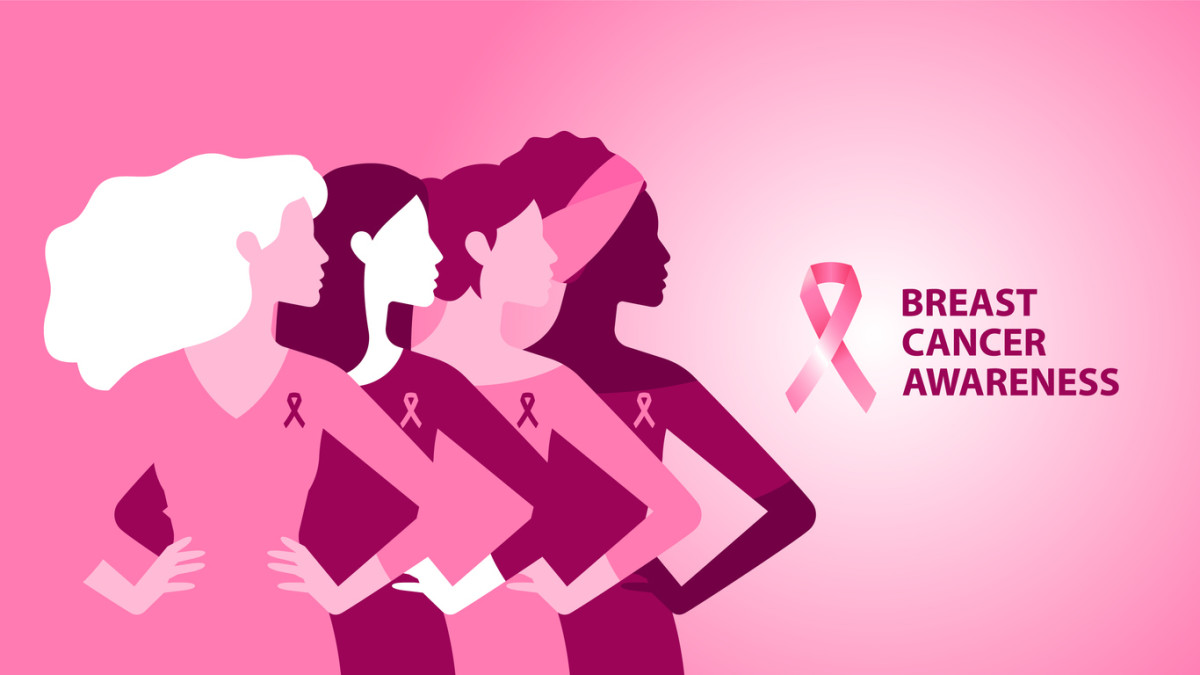Why (sometimes) I'll opt out of mammograms and do this instead.
![Woman getting mammogram.By Rhoda Baer (Photographer) [Public domain or Public domain], via Wikimedia Commons Woman getting mammogram.By Rhoda Baer (Photographer) [Public domain or Public domain], via Wikimedia Commons](https://usercontent1.hubstatic.com/8473300_f520.jpg)
Why I brought mammogram back, but won't this year.
This section is an update to my article below. Back then I stopped getting mammograms for all the reasons I lay out in the next section.
I'm still not fully pro mammo, especially for women under 30 who test positive for the BRCA gene(s) and women with dense breasts.
But, read on.
(Update: April 6th, 2015)
Last year I spoke to a nurse at my imaging center and told her I stopped doing mammograms because I didn't want repeated radiation (beyond what we all get day to day (See this link to summarize the increasing confusion about whether breast mammography helps or harms women).
The nurse and later the radiologist reassured me that the amount of radiation exposure during the new 3D mammogram (slightly higher than the 2D) is essentially the same as what you get flying from Orlando to LA. (The radiologist warned instead, against repeated Cat-Scans which emit high levels of radiation).
Still, why add the risk to my breast tissue if safer but equally effective breast cancer detection tools are available?
What finally convinced me wasn’t that I stopped worrying about the radiation or the potential risks of breast compression?
- My insurance company forced my hand. Blue Cross/Blue Shield for the first time since I started doing breast MRI (and sonograms, thermogram and doctor exam) said they wouldn’t cover an annual MRI unless I had a mammogram first. No surprise an insurance company once again dictated how I manage my own preventative care.
- I talked to a nurse and my radiologist. The nurse at my imaging center told me mammogram is the only screening tool that can detect the tiniest micro calcifications (sometimes cancerous) and the only screening tool that can detect ductal carcinoma in situ (DCIS) and lobular carcinoma in situ (LCIS).
So, will I get a 3D breast mammogram every year?
Probably not.
(Read: Vast Study Casts Doubt on Value of Mammogram)
I might get one every two years and possiblystop altogether when I'm older on the advice of Dr. Christine Northrup.
I know this is a calculated gamble.
If I wait two years and screening detects either of the two cancers I mention above this means I will have missed early detection and treatment. However, because a thermogram detects heat changes (cancer gives off heat), I'm betting on a thermogram and clinical exam (thermography doesn't detect cancer, it detects changes in the physiology of the breast, e.g. heat, vascularity).
But a thermogram and clinical exam isn't enough. So, I plan to aggressively appeal to my insurance company to get them to cover an MRI this year on the grounds that:
a) I've had abnormal breast screening findings (twice)
b) I'm adopted and therefore have no genetic history to calculate that risk.
c) I don't want the radiation exposure every year and should be allowed to choose other detection tools for my first line screening, regardless of the approved Gold Standard protocol for breast screening (which is, mammogram first).
Breast cancer screening is highly individual
Every woman needs to make her breast screening decisions based on her history, her individual risk factors and her comfort level with the plusses/minues of each detection tool.
1. Prevention however, should be our first priority. Lifestyle choices, nutrition, exercise, stress management (how we think does indeed impact our health in measurable ways) and targeted supplementation (e.g. vitamin D3).
2. Women should use a multi-modality breast cancer detection approach. Each tool (including the all-important doctor exam) offers advantages and disadvantages. I stopped doing self-breast exam and rely on my doctor's expertise to feel for unusual lumps.
The breast-screening approach I used to recommend
Anyone who reads my website or social media posts knows for the last couple years I’ve advocated for a three-prong approach to breast cancer screening:
1. Clinical breast exam by health care practitioner with vast experience in women’s breast health
2. Breast MRI ideally in an imaging center with a dedicated breast MRI system.
3. Breast thermogram by a board certified thermographer who specializes in breast health
But let me add an important disclaimer about mammograms:
Some screening is better than none, that being said, getting a mammogram every year, isn't. (Update: The new 3D mammogram has THREE TIMES the radiation levels.)
I don’t recommend women get a mammogram every year once they reach 40 as the American Cancer Society still advises despite revised guidelines from the U.S. Preventive Services Task Force that concluded, “annual mammograms weren't necessary for women under age 50, and that screenings were recommended only every two years .“
Moreover, a mammograms isn’t the ideal screening tool for dense breasts and women with dense breasts (common in young women and women of all ages) may be up to six times more at risk for cancer. Certain aggressive breast cancers are increasing in younger women (this may be due to increased exposure to hormone disrupters called xenoestrogens or other environmental toxins or it may be the result of improved screening sensitivity).
The debate over mammograms regarding frequency, effectiveness for early detection, over diagnosis of breast cancer and potential harm from radiation and compression continues across the many voices within the cancer industry.
So what should YOU do?
- First and foremost, focus on breast cancer prevention. (see video below, Dr. Christine Northrup’s top ten tips for breast health).
- Next, push doctors to support breast cancer screening tools that serve two purposes, that do no harm and that detect the most aggressive hard to spot cancers when they are small and treatable.
- Reconsider annual mammograms
- Steer clear of biopsies as a default decision for some suspicious findings. Up to 22% of breast cancers resolve on their own and need no intervention. Worse, needle biopsies may have unintended consequences (more on this below).
As with any radical shift from how-it’s-always-been-done to a better way, when the people roar and the research is ready, institutions have to respond. Eventually the gold standard for breast cancer screening will need to shift from mammograms to at the very least, a customized individual approach that will hopefully include MRI and breast thermogram.
“Every year when Breast Cancer Awareness Month (October) comes around I am a saddened and surprised that thermography hasn't become more popular, says Dr. Christine Northrup. "Part of this is my mindset. I'd rather focus on breast health and ways to prevent breast cancer at the cellular level than put the emphasis on testing and retesting until you finally do find something to poke, prod, cut out or radiate."
H. Gilbert Welch author of "Should I Be Tested for Cancer?" Maybe Not and Here's Why" has rattled a view cages in the medical and cancer screening community by writing in a New England Journal of Medicine report "Effect of three decades of screening mammography on breast-cancer incidence" that mammogram has led to an over diagnosis of breast cancer.
"We estimated that in 2008, breast cancer was over diagnosed in more than 70,000 women; this accounted for 31% of all breast cancers diagnosed. Despite substantial increases in the number of cases of early-stage breast cancer detected, screening mammography has only marginally reduced the rate at which women present with advanced cancer. Although it is not certain which women have been affected, the imbalance suggests that there is substantial over diagnosis, accounting for nearly a third of all newly diagnosed breast cancers, and that screening is having, at best, only a small effect on the rate of death from breast cancer."
Because the digital breast tomosynthesis (DBT) exam requires two additional exposures over a standard mammogram, the total radiation dose from the combined 2D and tomosynthesis examination is three times that of a standard mammogram.
— 2011 Radiology TodayDr. Mercola interviews Dr. Christine Northrup on breast health tips
![MRI offers advantages over mammogram, particularly with dense breasts. By Unknown Photographer [Public domain], via Wikimedia Commons MRI offers advantages over mammogram, particularly with dense breasts. By Unknown Photographer [Public domain], via Wikimedia Commons](https://usercontent1.hubstatic.com/8473312_f520.jpg)
Research no longer supports mammography as gold standard
I’ve been getting mammograms every years once I turned 30 after a doctor found a lump in my right breast when I was in college (benign, fibrocystic). In addition, because I’m adopted I wanted to be extra diligent (although only 5 to 10% of all cancers are inherited (American Cancer Society) but back then I didn't know that).
Two years ago I stopped getting mammograms. At this writing I’m 48. That’s 16 years of radiation exposure with a tool research finds isn’t catching the cancers we want to catch very well and paradoxically catches too many of what is benign or can be left alone, unnecessarily scaring women with false positives which leads to emotional distress and unnecessary biopsies.
My decision to ditch mammograms came after over two years of research and conversations with my certified breast thermographer.
Ultimately however, I decided to stop getting mammograms after reading advice from a well known natural health physician Dr. Joseph Mercola. Dr. Mercola is my natural health go to guru, so is Dr. Christine Northrup. Neither speculate with loose-lipped quackery, both back their recommendations with long-time credible peer-reviewed research.
Dr. Mercola and I don’t agree entirely however, on breast cancer screening protocol. He recommends women get a clinical breast exam and thermogram. I suggest adding an MRl (frequency depending on age and each individual risk factors).
“Health officials recommend that all women over 40 get a mammogram every one to two years, yet there is no solid evidence that mammograms save lives, and the benefits of mammograms are controversial at best. Meanwhile, the health hazards of mammography have been well established,” writes Dr. Mercola.
But maybe you feel like all this is alarmist quackery nonsense.
I will admit Dr. Mercola is an unapologetic whistle blower about the medical and regulating community which makes him easy target for criticism. He’s an establishment boat-rocker who upsets the FDA, the CDC, the NIH and many other initialed world health monoliths. Dr. Mercola addresses openly his critics who claim he walks like a quack and talks like a quack.
And moreover you might be thinking, who am I to advise anyone on breast cancer screening?
I’m no doctor but I write extensively about wellness. Before I recommend to another fellow citizen what I do about my own health, I research the topic eight ways to Sunday. But ultimately you choices come down to what feels right for you.
This is not to say in light of research my views don’t change over time. Three years ago I advocated for an annual mammogram. Today? Not on your life, literally. Health care science is a moving target and what’s a best practice today, changes tomorrow.
So, maybe you’re suspicious of natural health advocates given what your doctor tells you about the supplement popping, acupuncture-poking meditating types? None of this stuff is FDA approved. But FDA approved isn’t an approval stamp that guarantees your safety just like “all natural” is not a green light for benign and effective.
The only answer is to do research and to discern the advice from medical professionals you respect.
But women are caught between a rock and a hard place when it comes to breast cancer screening.
Our doctors tell us mammograms are safe. It seems like everyone we know knows someone touched by breast cancer. We can’t get an MRI or thermogram just by asking because our insurance won’t cover them unless our doctor deems it medically necessary. I'm not suggesting patient's be allowed to order up any old anxiety-relieving test they want, but when evidence suggests women are getting a raw deal with breast screening, the paradigm needs to change.
I admit It’s pie in the sky thinking to want every woman over a certain age to have access to a $1500 MRI and $350 thermogram on top of their clinical exam. But lets let the research on mammography and the experts fighting for a better breast cancer screening protocol convince you that this is a fight worth fighting for.
I promise.It is.
Have you ever had a breast thermogram?
Why I'm opting out of mammogram
Here’s my simple run down on why I’m opting out of mammograms from now on:
- Mammogram misses too much. While this screening method is still considered the gold standard mammograms miss 20-40% of cancers particularly in women with dense breasts.
- Compressing cancer cells that if left alone remain harmless. H. Gilbert Welch ("Should I Be Tested for Cancer?: Maybe Not and Here's Why) pout states that women diagnosed with Stage 0 breast cancer left untreated would die with, not die from the "cancer."
Every situation is unique of course, but compressing breast tissue that may contain cancerous cells is a risky move. In some instances it's best to leave self-contained calcifications alone and monitor them with a thermogram and MRI over time. “Under compression, neoplastic cells from in situ carcinoma may spread within the interconnected ductal system, potentially altering the aggressiveness of this disease. Thus, the high number of interval tumors and the rapid progression of breast cancer in younger women are not explained and may relate to the mammographic procedure itself.” “Mammography Controversy. Time for Informed Consent?”- False positive rate of 60% “Mammography also has undergone increased scrutiny for false positives and excessive biopsies, which increase radiation dose, cost, and patient anxiety.” (Drukteinis JS, Mooney BP, Flowers CI, Gatenby RA. “Beyond mammography: new frontiers in breast cancer screening.” American Journal of Medicine. 2013 Jun). And, biopsies may in fact increase the risk of cancer cells spreading, when in many cases, left alone, some cancer cells will self-contain and not spread.
- Radiation exposure. This is the point where your doctor will lean in and smile reassuringly and tell you it’s fine, really it is. Mammograms only give you low, low low dose radiation. “John Gofman, M.D., Ph.D. – a nuclear physicist and a medical doctor, and one of the leading experts in the world on the dangers of radiation – presents compelling evidence in his book, Radiation from Medical Procedures in the Pathogenesis of Cancer and Ischemic Heart Disease, that over 50 percent of the death-rate from cancer is in fact induced by x-rays,” writes Dr. Mercola. “Now consider the fact that the routine practice of taking four films of each breast annually results in approximately 1 rad (radiation absorbed dose) exposure, which is about 1,000 times greater than that from a chest x-ray. Even the American Cancer Society lists high-dose radiation to the chest as a medium to high risk factor for developing cancer.”
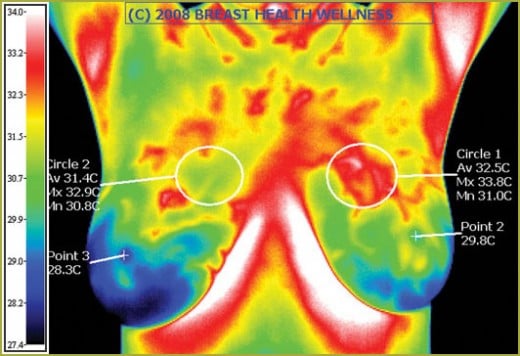
Consider adding breast thermography
Thermography when conducted by a certified thermographer offers breast cancer screening advantages over mammography when combined with a clinical exam and MRI. It uses no radiation or compression and is non-invasive.
“Among other conclusions, these studies,” writes Breast Thermography International, found that when thermography has been added to a woman's regular breast health checkups, a 61% increased survival rate was realized, and when used as part of a multi-model approach (clinical examination, mammography and thermography) 95% of early stage cancers will be detected.”
Thermography, writes the National Cancer Institute “is a procedure in which a special camera that senses heat is used to record the temperature of the skin that covers the breasts. A computer makes a map of the breast showing the changes in temperature. Tumors can cause temperature changes that may show up on the thermogram. Thermogrpahy is a procedure in which a heat-sensing infrared camera is used to record the surface heat produced by different parts of the body. Abnormal tissue growth can cause temperature changes, which may show up on the thermogram. Thermography may be used to diagnose breast cancer and other tumors.”
For detailed description about breast thermography.
Unfortunately the National Cancer Institute ends their description of thermography with the following false disclaimer:
“There have been no clinical trials of thermography to find out how well it detects breast cancer or if having the procedure decreases the risk of dying from breast cancer. “
Dr Mercola begs to differ.
“In fact, a study published in 2009 in the Journal of Medical Systems and the National Institutes of Health's PubMed reported that thermography aided by the latest analytical software sensors is 94.8 percent accurate – or nearly twice as effective as mammography! With more and more recent studies supporting these numbers, it has to make you wonder what the FDA is thinking by refusing to admit the good that it is."
How often should I get a breast thermogram?
Age
| Frequency
|
|---|---|
By age 20
| initial infrared, baseline
|
20-30
| Every 3 years
|
30 years of age and over
| Every year
|
From Breasthermography.com courtesy of Dr. William Amalu. Dr. Amalu is a board member of the International Academy of Clinical Thermology. He instructs physicians worldwide in the science and interpretation of thermal imaging. He also lectures worldw
Bucking biopsies and the medical establishment. It ain't easy.
Does a biopsy increase your risk of breast cancer spreading? In some cases, yes. From the website: Breast Cancer Choices, Biopsy, FAQ:
“In June 2004, the results of the bombshell Hansen study, "Manipulation of The Primary Breast Tumor and The Incidence of Sentinel Node Metastases From Invasive Breast Cancer," were published in the American Medical Association's prestigious journal, Archives of Surgery.....
...."revealing that patients undergoing fine needle biopsies were 50% more likely to have micrometastases spread to the sentinel lymph node than those patients having the entire tumor removed for biopsy. The implication of this discovery is that a woman without lymph node involvement, who would have been staged at a low-level, now will be staged higher, her disease considered more advanced, and more aggressive treatment might be recommended. Over the years, several researchers have voiced serious reservations about routine needle biopsies, but they were mostly ignored by their colleagues. “
It's never easy to go against the norm of mainstream medicine especially if you've had an abnormal finding. Suddenly you panic and your doctor becomes your savior to soothe your frazzled nerves. Whatever they say, is golden. Moreover, who has the emotional energy or time to argue a case for a thermogram and MRI? Who wants to?
Do it anyway.
Our whole life we've been taught to worship the whitecoats, that doctors know best. They have the expensive training, right?
Well, yes but….
I've met many fine medical practitioners over the years, genuinely well-intentioned with outstanding medical credentials. I've also met some patronizing, dismissive clods who talked to me like I was a naïve little toddler ready to slurp up all their advice like a good little girl.
The reality is a doctor's advice depends on their training, their experience, their intuition, their ability to hear their patient, how much time they can spend with you and most importantly their wellness paradigm. Many stay inside the box and treat symptoms with medication (and lifestyle change which is always beneficial). Holistic healers dig deeply, they use approaches that gently work naturally with the body rather than against it.
Integrative practitioners, like the MD I see, focus primarily on holistic natural approaches but employ conventional methods as necessary. My doctor will write an order for mammograms but when I told her I'm opting out she wrote an order for an MRI. She could easily argue my case to the insurance company because I have dense breasts, I'm adopted, I've had abnormal mammograms in the past and because I begged (not really but I would have).
My personal belief is women deserve the BEST breast cancer screening possible, one that strikes a balance between catching aggressive cancers early enough to treat, but one that won't over treat suspicious areas that can be left alone and simply monitored over time. Your screening protocol shouldn't harm you or lead to false positives and unnecessary biopsies.
Do you think for one second if the CEOs of the largest health insurance companies had research in front of them showing that MRI and thermogram in combination with a clinical breast exam was the best breast cancer screening approach for their wives, mothers and daughters that they'd stick to their own company's dictate that mammograms are the gold standard?
Ha.
Building a case for a breast MRI
Most conventional doctors won't agree to the three-prong breast screening approach because the current gold standard is clinical exam and mammogram.
If your mammogram is suspicious or you have dense breasts they may order a follow-up ultrasound as I’ve had several times. In some cases if you have certain risk factors your doctor may order an MRI. Rarely will your doctor order a thermogram as an adjunct (in addition to) screening.
So even if you want the three-prong approach you can’t get a doctor to order it which means no insurance reimbursement or coverage. MRI’s can run $1000 plus dollars, thermograms $300 plus.
Ouch.
At this writing I’m in the middle of an insurance battle. My carrier covered my breast MRI back in April but refuses to cover the six month follow up I had in October. Apparently they gave my case to the National Imaging Association (NIA) who decided my follow-up MRI wasn’t medically necessary.
Although my breast thermogram results were normal my initial MRI detected a small suspicious calcification in my right breast (suspicious due to the shape and dye-contrast flow). An MRI is highly sensitive and can catch lesions as small as 3mm (which means you'll see more and possibly worry unnecessarily but I still recommend an MRI over a mammogram).
My doctor ordered a follow-up in six months later (I also had a follow up thermogram which was normal). Fortunately the area of concern shrunk and was re-classified non-suspicious. The NIA stated to my insurance company that the follow up MRI wasn’t necessary because no cancer was indicated and I didn't have a biopsy (my radiologist didn't recommend one and I would have refused anyway).
Am I hearing this right?
I had to have cancer and a biopsy to deem the follow up MRI medically necessary? Wasn’t the radiologist's finding of a “BI-RADS suspicious abnormality” enough justification?
I hate to be a nervous nelly (back in the day I was, now I’m more relaxed and pragamatic) but breast cancer accounts for 29% of all newly diagnosed cancers, second only to skin cancer. It’s big; lots of ladies are affected and sadly, losing their lives.
While prevention is the first line of defense, we need to figure out how much breast screening is too much, not enough and what's the right kind of screening.
Writing this article there’s a part of me that feels like my three-pronged screening advice is handing women a nice idea sealed in a glass box, lovely to look at but entirely inaccessible.
Break the glass. Talk to your doctor. Show her the research. Insist on a thermogram. Insist on an MRI. If you ever had an abnormal mammogram or ultrasound you've got a case. If you haven’t (and thank goodness because abnormal breast screening results can make you want to vomit) talk to you doctor about how you can work the system to your healthy advantage.
Yep I said it, work the system, because the system, it will certainly work you.
Despite evidence that breast thermography sensitivity and accuracy has drastically improved over 20 years, most doctors still give it a thumbs down. So you have two choices, stick with what you're doc is telling you about mammography or step outside the box, but not blindly, armed with facts.
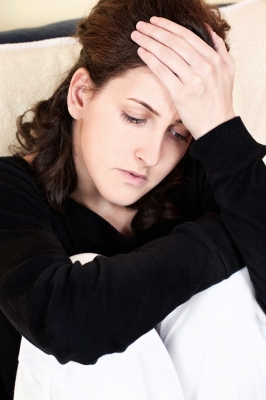
Worry less about your genes and more about your worry
Your genetics aren't a sentence for breast cancer. "About 5% to 10% of breast cancer cases are thought to be hereditary, resulting directly from gene defects (called mutations) inherited from a parent." - American Cancer Society.
Likely you already know that lifestyle factors, avoiding environmental toxins and upping your vitamin D are important to breast cancer prevention.
But please, please please don't underestimate the affect your emotional health has on your well-being. Women tend to put themselves last in line and gradually resentment builds. Anger ensues, stress hormones bubble up. The cascade affect on your health is quiet but ruinous.
Don't resent, seethe and stay angry. Ask for help. Insist on help. Let go of doing it “all.”
Forgive.
Anger turned inward is toxic.
Delegate. Delegate. Delegate.
Say no, no, no, no.
Yes even to our kids coming at us with those sweet innocent, dependent beckoning eyes who will be out of the house in no time and so the guilt of NO, the guilt of saying I can't do for you every moment eats at you endlessly until nothing makes you feel better but doing more.
Your NO doesn't mean you're not their number one fan or mother-bear support; it means you matter like they matter. Saying NO, delegating the list means you want your kids to feel what you're not quite saying: that women are not inexhaustible supplies of giving until it hurts. We are not your martyrs so that you may live.
And let me close with this: once you know something that can save lives you can't unknow. Please share this with your mother, grandmother, aunt, sister, daughter and friends. Get girls started early on breast cancer prevention and on putting their best breast forward for screening.
Thank you.
Further reading
The Best Breast Test: The Promise of Thermography
Vitamin D and Breast Cancer Prevention. Oprah talks to Dr. Northrup

